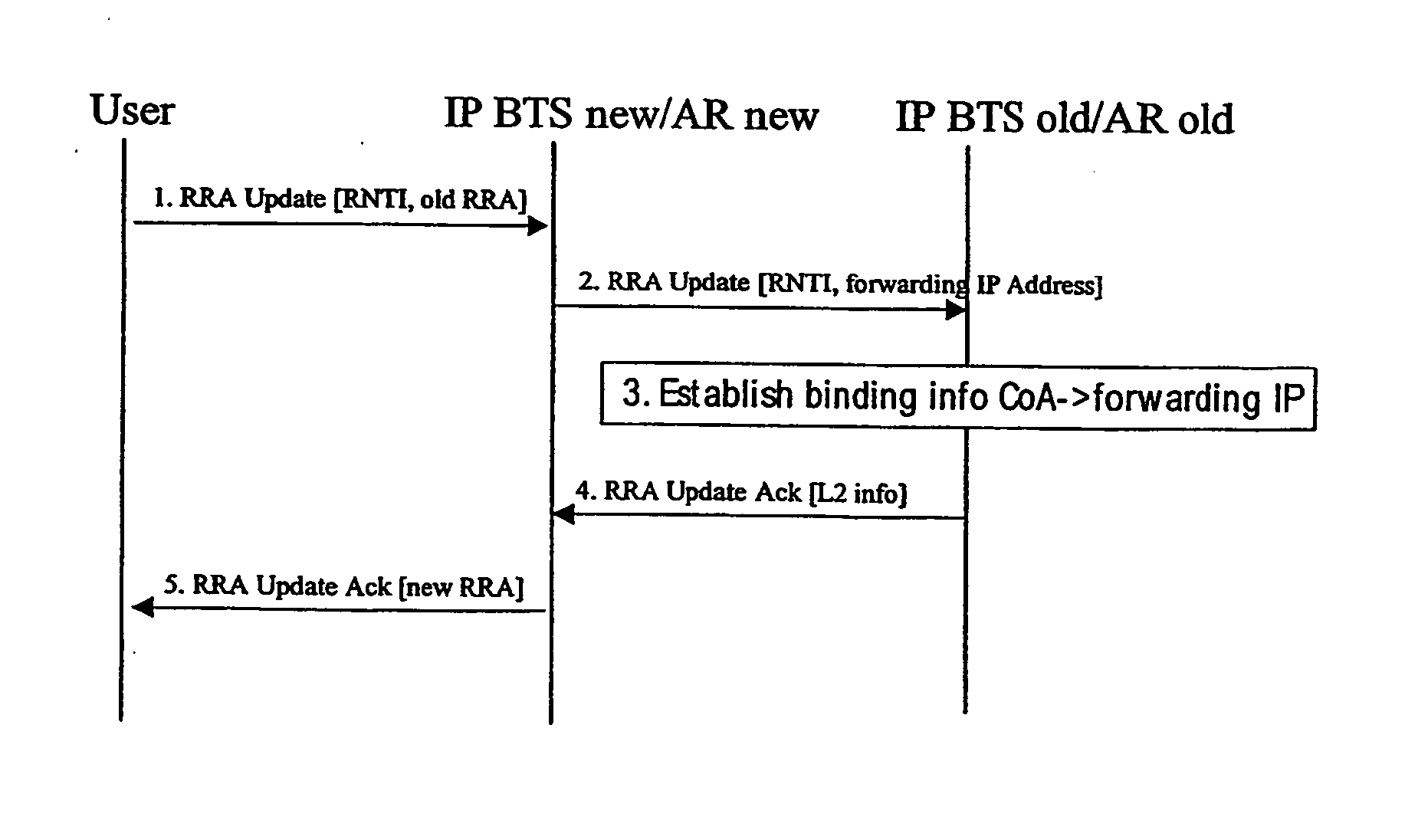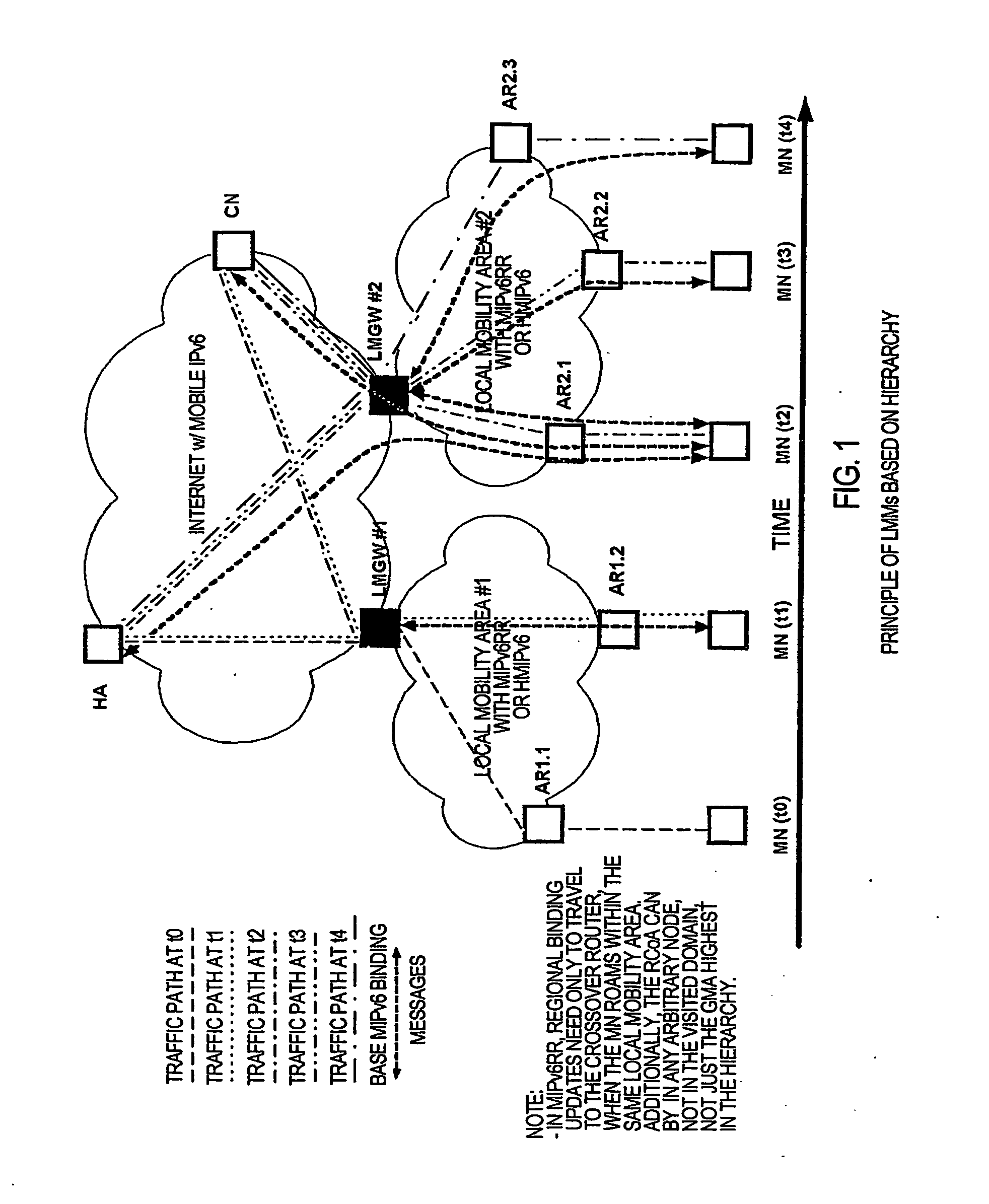Method and system for managing data flow between mobile nodes, access routers and peer nodes
- Summary
- Abstract
- Description
- Claims
- Application Information
AI Technical Summary
Problems solved by technology
Method used
Image
Examples
Embodiment Construction
[0085] Generally, the invention regards a mechanism to overcome the problems associated with Mobile IP under frequent change of care-of address by the Mobile Node (MN). In the examples below Mobile IPv6 is used but it should be noted that the invention may be implemented as well with other protocols like Mobile IPv4. Aspects of the invention are shortly: while the MN is changing cell it creates the new care-of address (CoA) as in standard Mobile IPv6 but it does not send the binding updates (BU) to Home Agent (HA) or to Correspondent Node (CN). Instead it sends BU to the old Access Router (AR) or it does not send a BU at all (additional to the fast-BU between the new- and old-AR) in case of Fast Handovers (Internet Draft). The invention introduces a mechanism based on Access Router (AR) anchoring built on augmentations to the Fast Handovers mechanism (Internet draft). Different heuristics are presented on which the Anchor Access Router (AAR) could be relocated. Two options are descr...
PUM
 Login to View More
Login to View More Abstract
Description
Claims
Application Information
 Login to View More
Login to View More - R&D
- Intellectual Property
- Life Sciences
- Materials
- Tech Scout
- Unparalleled Data Quality
- Higher Quality Content
- 60% Fewer Hallucinations
Browse by: Latest US Patents, China's latest patents, Technical Efficacy Thesaurus, Application Domain, Technology Topic, Popular Technical Reports.
© 2025 PatSnap. All rights reserved.Legal|Privacy policy|Modern Slavery Act Transparency Statement|Sitemap|About US| Contact US: help@patsnap.com



